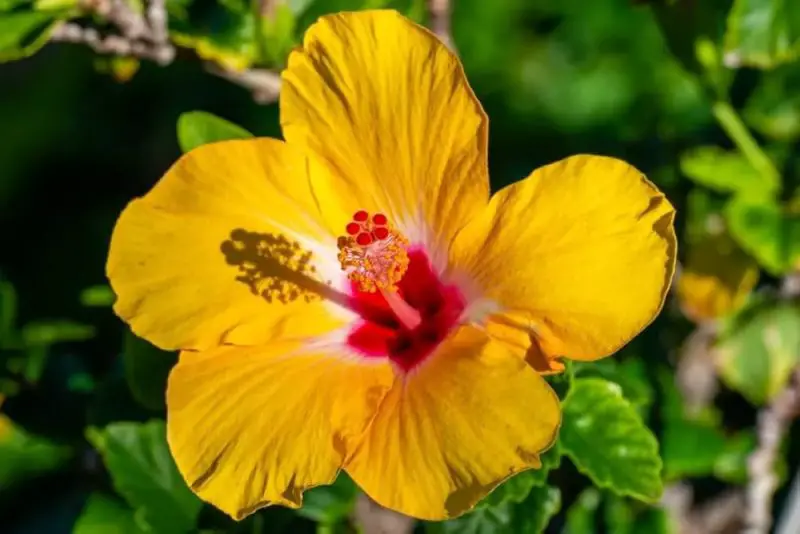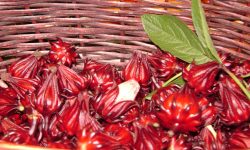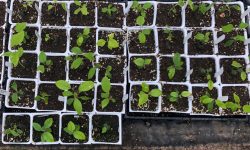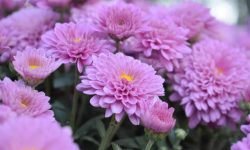Hibiscus plants are famous for their dazzling flowers and tropical charm. They fill gardens and patios with vibrant reds, pinks, and yellows that catch every eye. Yet, many gardeners struggle to make their hibiscus bloom consistently. The secret often lies not in fertilizer or water but in sunlight. Light fuels their energy and drives every stage of growth—from leaf formation to bud opening. Understanding how much sun your hibiscus needs is essential to help it thrive and bloom beautifully throughout the season.
Too much or too little sunlight can quickly change how hibiscus grows. Too little makes the plant leggy and weak, while too much scorches leaves and stunts flower production. Finding the right balance creates strong stems, glossy foliage, and endless blossoms. Whether you grow hibiscus indoors or outdoors, mastering its sunlight needs turns your plant from ordinary to extraordinary. Once you understand how light shapes hibiscus growth, you can keep it blooming bright, lush, and healthy year after year.
Understanding Hibiscus Light Requirements

Sunlight is the most important factor in hibiscus health and blooming. These tropical plants evolved in regions with strong, consistent light. They perform best with six to eight hours of direct sunlight every day. This steady exposure powers photosynthesis, helping the plant create energy for growth and flower production. Without enough light, hibiscus becomes weak, leggy, and slow to bloom. Its stems stretch toward the nearest light source, and buds fail to form or open. Strong, balanced sunlight makes the plant sturdy and full of vibrant life.
Different hibiscus types vary in their light tolerance. Tropical hibiscus thrives in bright, direct sun, while hardy varieties appreciate partial shade during very hot afternoons. If exposed to extreme sunlight, leaves may show pale spots or brown edges from stress. In such cases, provide filtered light using sheer curtains or by positioning the plant near taller companions. Morning sun and gentle afternoon shade create ideal conditions for balanced growth. Maintaining consistent light throughout the day keeps foliage glossy and blooms continuous.
Seasonal changes also affect light needs. In summer, sunlight intensity increases, so potted hibiscus may need partial protection. During winter, move them to brighter spots or near south-facing windows. Indoors, supplement natural light with full-spectrum grow lamps placed about a foot above the canopy. Rotate the pot weekly to ensure even light exposure. When given steady, moderate sunlight, hibiscus responds with lush leaves, strong stems, and spectacular flowers that last from spring through late fall.
How Sunlight Affects Hibiscus Growth and Blooms
Sunlight influences nearly every part of hibiscus development, from leaf shape to flower size. These plants rely heavily on light for energy, using photosynthesis to convert sunlight into sugars. Strong, consistent sunlight allows hibiscus to grow dense, leafy canopies that support abundant blooms. When sunlight is sufficient, stems remain sturdy, leaves stay dark green, and buds form continuously. The plant directs its energy toward creating new flowers instead of stretching for light. Without enough sun, hibiscus becomes tall and weak, with smaller leaves and fewer blossoms. The difference in flower production between shaded and sunny plants can be dramatic.
The intensity and duration of sunlight also determine flower quality. Plants grown in full sun often produce larger, more vibrant blooms compared to those kept in partial shade. Bright light enhances pigment formation, giving petals deeper color and longer-lasting vibrancy. However, excessive sunlight—especially during hot afternoons—can cause wilting or leaf burn. Finding balance between light and shade is key to consistent flowering. Too much heat dries the soil quickly and forces the plant to conserve energy instead of producing buds. Gentle morning sunlight with partial shade in late day offers the best results.
Light also plays a role in the timing of hibiscus blooming cycles. These plants follow natural photoperiod cues, responding to day length and brightness. In regions with shorter days, flowering slows naturally. Providing additional light indoors during winter helps maintain growth and prevents dormancy. Regular exposure to bright light keeps hibiscus blooming nearly year-round. When sunlight is balanced and consistent, hibiscus rewards you with bold colors, large blossoms, and lush foliage that brighten every garden corner.
How to Adjust Sunlight for Indoor and Outdoor Hibiscus
Indoor Hibiscus
Indoor hibiscus needs the brightest possible light to stay healthy and continue blooming. Place your plant near a south-facing window where it can receive at least six hours of sunlight daily. East-facing windows also work well, offering gentle morning light that encourages steady growth without overheating. Rotate the plant weekly to keep all sides evenly lit and prevent one-sided leaning. Dust the leaves occasionally so they can absorb light efficiently. Clean leaves reflect light better and promote stronger photosynthesis.
If natural light isn’t enough, use a full-spectrum grow light that mimics daylight. Position the lamp about twelve inches above the plant canopy and keep it on for eight to ten hours daily. Avoid placing hibiscus too close to heating vents or air conditioners, as sudden temperature changes stress the plant. Indoor hibiscus thrives in bright, indirect light rather than harsh, direct rays through glass. With consistent brightness and stable warmth, your hibiscus will continue to produce glossy leaves and colorful blooms even inside your home.
Outdoor Hibiscus
Outdoor hibiscus enjoys plenty of sunlight, but balance is crucial to avoid stress from intense heat. These plants thrive best with six to eight hours of sun daily, especially morning light. Afternoon shade protects leaves from burning in extremely hot climates. If temperatures regularly exceed 95°F, move potted hibiscus to a spot that receives filtered sunlight during midday. Constant sunlight without relief can scorch petals and dry the soil too quickly.
Garden-planted hibiscus benefits from spacing that allows air circulation and partial shade from nearby shrubs or trees. In coastal or tropical regions, full sun exposure works perfectly year-round. However, in dry inland areas, providing light shade during summer afternoons keeps the plant hydrated and reduces leaf curl. Regular watering helps the roots stay cool while maintaining steady moisture. During cooler months, increase sunlight exposure to strengthen the plant for the next growing season. Proper light management outdoors ensures long-lasting blooms and continuous, healthy foliage throughout the year.
Signs of Too Much or Too Little Sunlight
Hibiscus plants communicate their light needs clearly through visible signs. When exposed to too much sunlight, leaves often lose their deep green shade and develop yellow or bronze edges. You may notice brown spots appearing near the tips or along the veins. Flowers can dry out quickly after blooming, and buds sometimes fail to open. Extreme sunlight also causes soil to dry rapidly, forcing the plant into stress. Leaf edges may curl inward as the plant tries to conserve moisture. During heatwaves, the top leaves may even turn crispy. If this happens, move your hibiscus to a location with gentle morning sun and light afternoon shade to help it recover.
Too little sunlight produces a different set of problems. The leaves become dull, soft, and thin, while new growth slows noticeably. Stems stretch upward, searching for light, and the plant loses its compact, bushy shape. Flowers appear smaller and less frequent, sometimes losing their bright color entirely. The soil stays moist longer since the plant uses less water, increasing the risk of root rot. When this happens, gradually move your hibiscus to a brighter area to prevent shock. Adding reflective surfaces like white walls or mirrors nearby helps amplify available light indoors.
Learning to balance light levels takes observation and patience. Healthy hibiscus leaves feel firm, glossy, and evenly colored from top to bottom. Any sudden change in leaf tone or growth rate often signals an imbalance in sunlight exposure. Adjusting position slowly and consistently restores balance. Once proper light is maintained, hibiscus recovers quickly—its leaves regain shine, buds form regularly, and flowers bloom in rich, vibrant colors throughout the growing season.
Seasonal Sunlight Adjustments for Hibiscus
Spring Sunlight Needs
Spring is the season of renewal for hibiscus, marking the start of active growth after winter rest. As daylight extends, gradually increase sun exposure so the plant adjusts safely. Begin with three to four hours of gentle morning sun and add more each week until it receives at least six to eight hours daily. Sudden, intense light can scorch delicate new leaves, so transitions should happen slowly. When moving hibiscus outdoors, choose mild, breezy mornings to prevent shock.
This is also the best time to prune lightly and fertilize, as longer daylight triggers new shoots. Indoors, place your hibiscus near east or south-facing windows for maximum brightness. Clean windows regularly so sunlight penetrates easily. Watch for any signs of stress such as yellow edges or drooping. Balanced sunlight in spring helps hibiscus strengthen its roots and produce glossy leaves that store energy for summer blooming. Steady exposure now guarantees fuller growth, stronger stems, and more buds later in the season. Proper light management in spring lays the foundation for long-term health and vibrant blossoms.
Summer Sunlight Care
Summer brings intense sunlight and rapid growth, pushing hibiscus to its full potential. The plant thrives with abundant light but also risks overheating if unprotected. Ensure your hibiscus gets at least six hours of morning sun while shielding it from scorching afternoon rays. Temperatures above 95°F can stress the plant, causing buds to drop and leaves to fade. Place potted hibiscus near a wall or tall shrub that provides dappled shade during peak hours.
Mulch around the base to retain moisture and regulate soil temperature. Water deeply and consistently to prevent dryness from rapid evaporation. If leaves appear dull or flowers wilt too soon, move the plant to a slightly shadier spot. Coastal or humid areas may allow full-day sunlight, while dry inland zones require more protection. Regular observation helps you adjust conditions daily. Balanced sunlight and moisture during summer yield strong, glossy foliage and frequent blooms. A well-lit but sheltered hibiscus maintains color, vigor, and steady flowering throughout the hottest months of the year.
Fall and Winter Adjustments
As fall arrives, hibiscus gradually reduces its growth and flowering pace. Shorter days and weaker sunlight mean it needs gentler exposure. Move the plant where it receives bright, indirect light or soft morning rays. Cooler temperatures slow photosynthesis, so avoid long hours of harsh sun that can chill or dehydrate leaves. Outdoor hibiscus benefits from partial sunlight and wind protection during early fall transitions.
When winter begins, indoor positioning becomes essential. Place hibiscus near a south-facing window for at least six to eight hours of light. If natural sunlight is limited, use a grow light for eight to ten hours daily. Maintain a consistent temperature between 65°F and 75°F to keep the plant comfortable. Reduce watering slightly since lower light slows evaporation. Avoid placing it near cold drafts or heating vents that cause leaf stress. This balance of moderate light and warmth helps hibiscus rest without damage. By late winter, the plant will store enough energy to produce strong new growth and early spring buds.
How Humidity and Sunlight Work Together
Humidity directly influences how hibiscus reacts to sunlight. In tropical climates, moisture in the air keeps leaves cool, helping the plant handle strong light easily. The natural balance between sun and humidity prevents wilting even under long daylight hours. In contrast, dry climates create challenges because hot air draws water from leaves faster. When humidity drops below 40%, hibiscus struggles to stay hydrated and may develop brown edges or curled leaves despite regular watering. Maintaining humidity between 50% and 70% allows the plant to use sunlight efficiently.
Misting leaves lightly in the morning helps prevent dehydration during the day. Placing water trays or pebbles beneath pots also raises humidity around the plant. For outdoor hibiscus, mulching around the base locks in soil moisture and prevents rapid evaporation. Balanced humidity reduces light stress and keeps photosynthesis stable. However, excessive humidity without airflow can invite fungal problems like powdery mildew.
Good air circulation is as important as moisture levels. Gently moving air ensures leaves stay dry while roots remain hydrated. Indoor growers can use small fans to keep air fresh and humidity even. Outdoor hibiscus benefits from natural breezes that cool leaves under sunlight. Observing leaf condition is the best guide: shiny, upright leaves mean perfect balance. Managing humidity alongside sunlight helps hibiscus stay lush, glossy, and full of long-lasting blooms throughout changing seasons.
Choosing the Best Location for Hibiscus
Finding the ideal spot for hibiscus determines how well it thrives, blooms, and resists stress. Outdoor hibiscus grows best with six to eight hours of morning sun followed by gentle afternoon shade. South or southeast-facing areas provide the perfect combination of warmth and light. Avoid placing the plant near reflective surfaces like glass walls or concrete patios, which intensify sunlight and can burn the leaves. Airflow is equally important. Gentle breezes prevent heat buildup and help regulate moisture around the plant, keeping the leaves cool and vibrant.
For potted hibiscus, flexibility becomes an advantage. Move pots gradually as the seasons shift so the plant gets consistent light without sudden changes. During summer, choose partially shaded areas, while in cooler months, move them to warmer, brighter spots. Indoors, south-facing windows give the most light, but east-facing ones work well for delicate varieties. Rotate pots weekly for even exposure. Dust leaves occasionally so they absorb light efficiently.
Microclimates around your home also influence performance. Spots near fences or water features tend to stay warmer and more humid, which hibiscus enjoys. Grouping hibiscus with other sun-loving plants creates a shared microclimate that stabilizes heat and humidity. Correct placement maximizes photosynthesis, enhances flower quality, and minimizes stress. When the environment matches the plant’s natural needs, hibiscus rewards you with lush foliage and continuous, brilliant blooms that brighten your garden all year.
The Difference Between Tropical and Hardy Hibiscus Sun Needs
Understanding the difference between tropical and hardy hibiscus sunlight requirements helps you give each type ideal care. Tropical hibiscus, like Hibiscus rosa-sinensis, thrives in bright, consistent sunlight and high humidity. It prefers six to eight hours of direct sun daily but benefits from filtered light during the hottest hours. In very dry or arid regions, strong sunlight can damage delicate petals and cause early flower drop. Providing partial shade during midday prevents these problems while maintaining healthy growth and vibrant color. Tropical hibiscus grows best in climates with warm nights and minimal temperature swings.
Hardy hibiscus, such as Hibiscus moscheutos, tolerates more variation in temperature and adapts well to temperate climates. It loves full sun for eight hours daily and uses that energy to produce giant, plate-sized flowers. Its thicker stems and leathery leaves resist heat damage better than tropical types. However, insufficient sunlight reduces flower size and delays blooming. Consistent exposure to strong, direct light ensures sturdy stems and dense foliage.
Each hibiscus type responds differently to environmental balance. Tropical varieties thrive on warmth, humidity, and gentle light, while hardy species rely on full exposure and cooler air. Recognizing these contrasts helps you design the perfect growing setup. Whether you cultivate hibiscus in containers or garden beds, providing the right sunlight type guarantees abundant flowering, healthy leaves, and strong growth across all seasons.
Common Mistakes When Managing Hibiscus Sunlight
Overexposing Hibiscus to Direct Sunlight
One of the most common mistakes gardeners make is giving hibiscus too much direct sunlight. Although hibiscus thrives in strong light, intense rays during midday or afternoon can damage foliage and flowers. Leaves start to fade from deep green to yellow, and edges turn crispy or brown. Flowers may wilt within hours, losing their bright color. In severe cases, buds drop before opening, and stems dry quickly. Hot, dry conditions combined with harsh light accelerate moisture loss in both soil and leaves. To prevent damage, provide morning sun followed by gentle shade in the afternoon.
You can protect outdoor hibiscus using light fabric, shade cloth, or positioning them near larger plants that filter sunlight. For potted varieties, move containers gradually rather than all at once to avoid shock. Always monitor soil moisture—strong sunlight dries pots faster than garden beds. Mist leaves lightly in the morning to cool them naturally, but never in direct sun. Balancing exposure keeps hibiscus lush, glossy, and full of large, radiant blooms throughout every season. A well-protected plant lives longer, flowers more often, and maintains its tropical beauty even under strong sunlight.
Providing Too Little Sunlight
Insufficient sunlight limits hibiscus growth and flowering potential. When light levels drop below six hours daily, photosynthesis slows dramatically. The plant struggles to produce enough energy to grow leaves or buds. As a result, stems become thin and weak, while leaves darken but lose shine. Flowers appear smaller or stop forming altogether. Even with regular watering and fertilizer, the plant looks tired and sparse because light is the key to energy production. Without it, hibiscus directs strength toward survival instead of blooming.
To correct this, move your hibiscus into brighter light gradually. Indoor plants need a sunny south-facing window or a full-spectrum grow lamp for eight to ten hours daily. Outdoor plants benefit from pruning nearby trees or shrubs that block light. Rotate pots weekly to ensure all sides receive equal exposure. Avoid moving the plant suddenly from deep shade to intense sunlight, as this causes leaf scorch. Monitor growth and leaf color—vibrant green leaves with visible veins show healthy light balance. With steady sunlight, hibiscus quickly regains strength, forms dense foliage, and bursts into brilliant flowers once again.
Ignoring Seasonal Sunlight Changes
Many gardeners overlook how seasonal light changes affect hibiscus growth. The sun’s angle, intensity, and duration shift every few months, altering how the plant absorbs light. In summer, too much direct exposure can burn leaves and dry soil rapidly. In contrast, winter’s weaker light slows photosynthesis and causes leaf drop. Ignoring these variations leaves the plant stressed and unbalanced. Understanding the natural sunlight cycle helps maintain steady health all year.
As fall approaches, gradually reduce exposure to prevent stress before winter dormancy. During colder months, move hibiscus indoors or place it near a bright window for at least six hours of daily light. Use artificial grow lights if natural sunlight is insufficient. In early spring, reintroduce full sunlight gradually, starting with gentle morning rays. Outdoor gardeners can adjust plant placement to match changing sun paths throughout the year. Regular repositioning ensures consistent light absorption and prevents sudden exposure shock. By respecting seasonal sunlight shifts, you help hibiscus conserve energy, recover smoothly, and bloom stronger every cycle. The result is a healthier, balanced plant ready for vibrant blossoms year after year.
FAQs About Hibiscus Sunlight Requirements
How many hours of sunlight does hibiscus need daily?
Hibiscus needs at least six to eight hours of sunlight each day for healthy growth and blooming. Morning sunlight is ideal because it energizes the plant without overheating it. Too little light reduces flowering, while consistent exposure keeps leaves glossy, stems strong, and buds forming throughout the growing season.
Can hibiscus grow in partial shade?
Yes, hibiscus can grow in partial shade, especially in hot climates. It still needs bright, indirect light for several hours daily. Partial shade during the hottest hours protects leaves from burning. If the shade is too deep, flowering decreases noticeably. Light that’s filtered but steady produces balanced, lush growth and vivid blooms.
What happens if hibiscus gets too much sun?
Too much sunlight causes yellowing leaves, brown edges, and premature flower drop. The soil also dries quickly, stressing roots. During heatwaves, protect the plant with partial shade or filtered light in the afternoon. Regular watering and mulching help prevent overheating. Balanced exposure restores the hibiscus’s glossy leaves and consistent flowering.
Do indoor hibiscus plants need direct sunlight?
Indoor hibiscus plants need bright light but not harsh direct rays. Place them near a south-facing window for at least six hours of natural light. If sunlight is weak, use a full-spectrum grow light to supplement. Rotate the pot weekly to ensure even exposure, preventing leaning or uneven growth over time.
Does sunlight affect hibiscus flower color?
Yes, sunlight directly influences hibiscus flower color and intensity. Adequate light deepens pigments, making blooms more vivid and long-lasting. Too little light causes pale, faded flowers, while too much light may bleach petals. Balanced sunlight helps the plant produce rich, radiant tones that define the beauty of every hibiscus bloom.
Conclusion
Understanding how much sunlight hibiscus needs transforms the way your plant grows and blooms. With the right balance of light, heat, and care, hibiscus rewards you with stunning flowers and lush foliage year-round. Observing light conditions daily helps prevent stress and keeps growth steady. Whether grown indoors or outdoors, consistent, gentle sunlight builds strong stems and vivid blooms. Each hour of proper light strengthens your hibiscus’s color, shape, and vitality. When sunlight, water, and warmth work together in harmony, your hibiscus becomes a lasting symbol of beauty, energy, and tropical elegance in every season.






